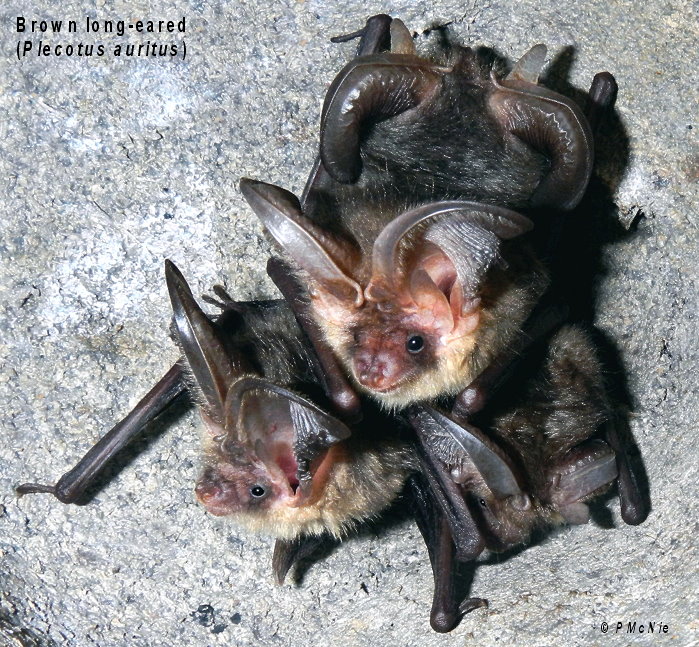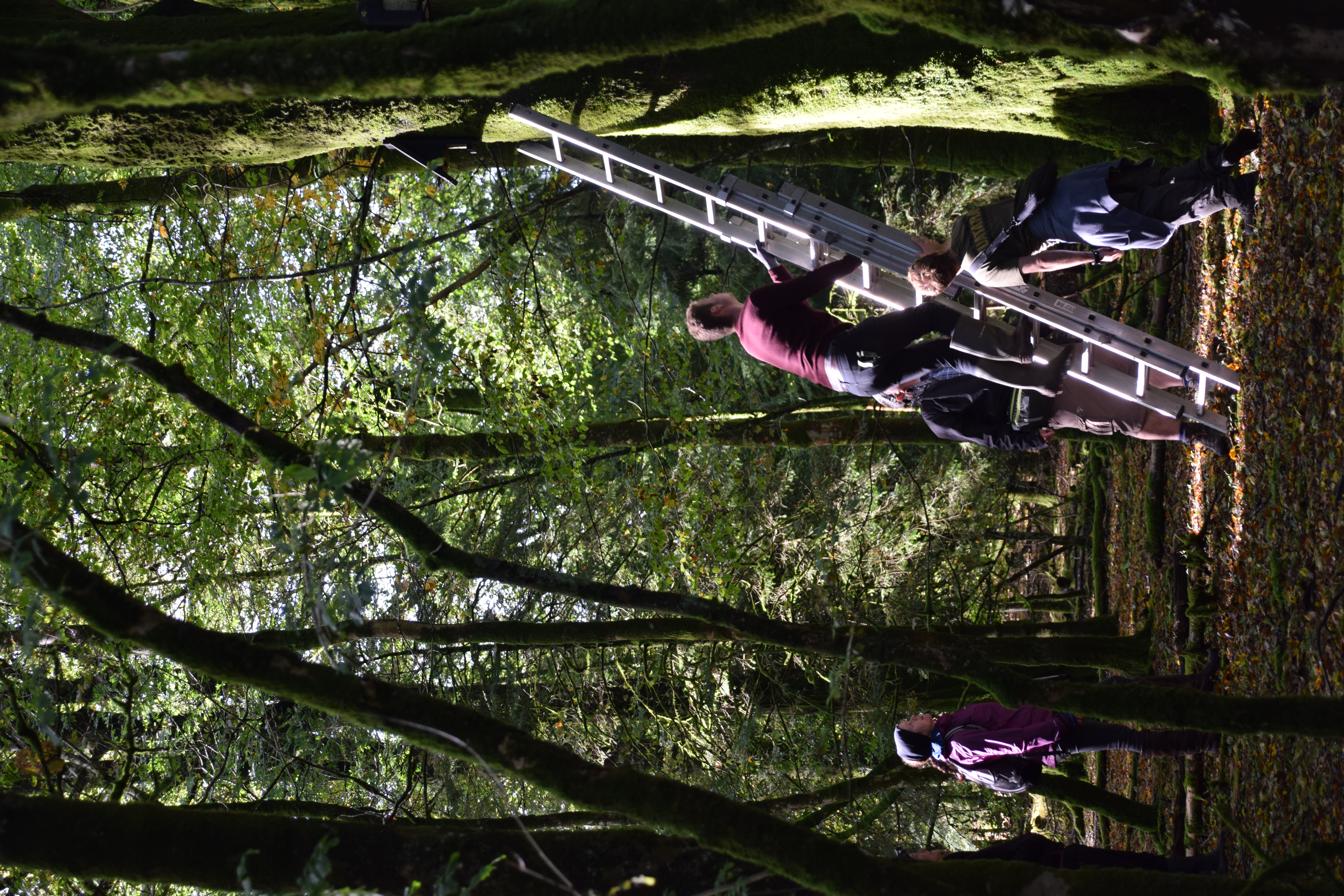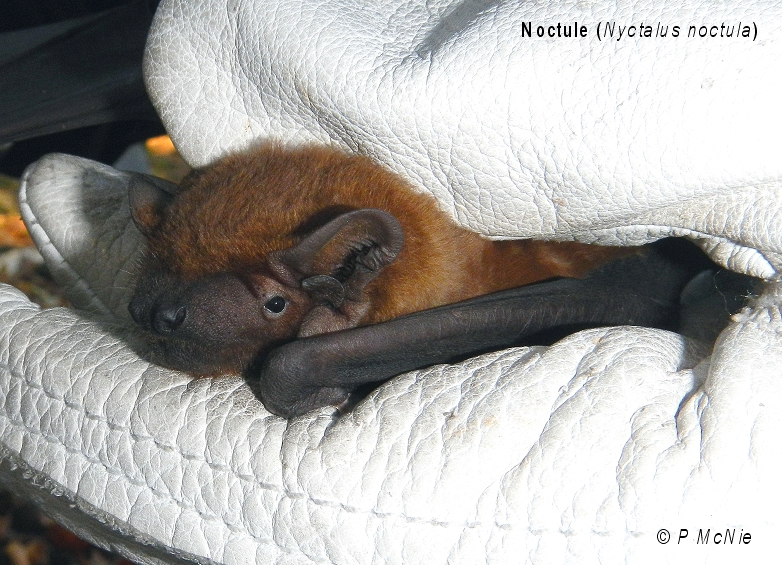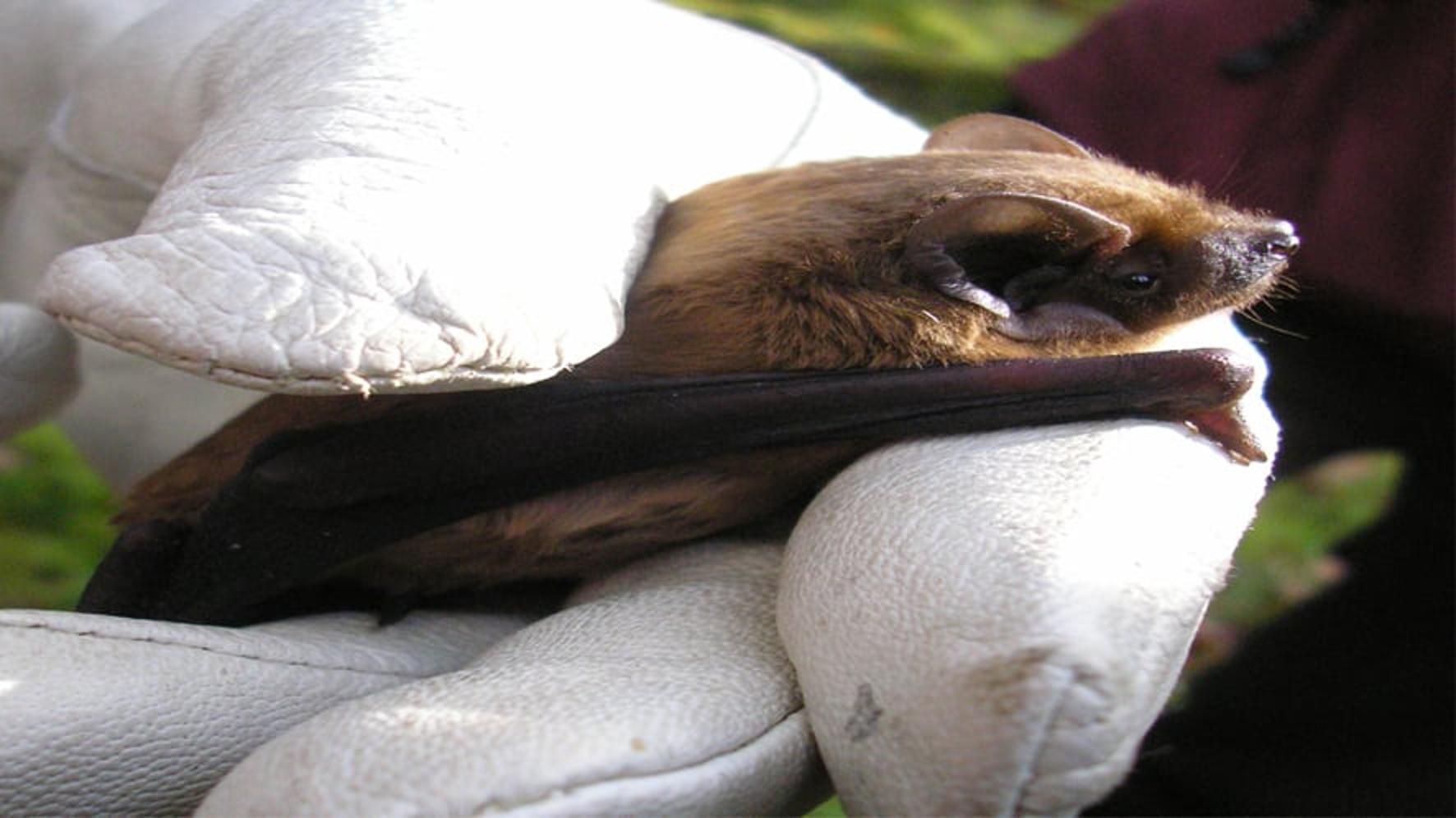Bats are coming out of hibernation and may be seen flying around in the early evening, just after sunset, but how much do you know about these amazing creatures and how we look after them?
What kind of bats are in the South West?
There are 18 species of bat found in the UK and the South West is a stronghold for many of them. Fourteen species can be found in Cornwall, and 16 in Devon. They include pipistrelle bats, greater and lesser horse-shoe bats, brown long-eared bats, noctule bats, myotis bats and more!
With changes to the global temperatures, new bat species are starting to appear in the UK, such as Nathusius’s pipistrelle and Alcathoe’s bat. Ten years ago, the Nathusius’s pipistrelle was only found in mainland Europe. However, changes to their migration patterns (which can be up to 1,200 miles!) have forced them further North. This is incredible when you consider they only weigh 8 grammes. Nathusius’s pipistrelle is now considered a resident species breeding in the UK.
Did you know?
Bats are the only mammals capable of true (self-powered) flight.

Which are the largest and smallest?
The biggest bats found in the South West can weigh up to 35 grams (about the same weight as a Yorkie bar) and have a wingspan of up to 40cm! Noctule bats and the greater horse-shoe bats are our largest species.
In comparison, the smallest bats, the tiny pipistrelles, weigh only 3-8 grams (only slightly more than a one pence piece) and have a wingspan of up to 23cm. Smaller species include common and soprano pipistrelles and the lesser horseshoe bats.
Did you know?
With wings folded, a pipistrelle bat could fit into a matchbox (but please don’t try this)!
Where can you find bats?
A bat will always be found in areas of high biodiversity because good habitats means there will be plenty of insects, and for all our bats, that means lunch!
Bats live in colonies, especially in the summer, known as roost sites. They use different roost sites at different times of year. This is because each site has a particular purpose:
Hibernation sites:
where the bats go to properly hibernate in the winter months. They tend to be dark, undisturbed sites with a stable low temperature and high humidity. Hibernation sites can include caves, tunnels, trees and some buildings.
Maternity sites:
where the females go to give birth. These tend to be warm sites with lower humidity like building lofts/roof spaces, or where the bats can safely cluster together, such as high in caves or trees with cavities.
All bats are protected in the UK, and the roost sites are also protected, even when the bats aren’t there. This is because bats are loyal to their roost sites and will return year after year to hibernate or have their young. Colonies of bats can use the same roost for 100-200 years! If an important roost site is destroyed, then the colony could collapse.
When found in buildings, it’s tempting to view bats like rodents, however, this is far from the case. Unlike mice and rats, bats do not cause any structural damage to buildings. If you find them in your house or outbuilding, you might want to cover items underneath the roost with plastic, but other than this, the advice is to leave them well alone.
We find bats at a lot of our reservoir sites and some of our treatment sites too. At our Tamar water treatment works we can have up to 300 pipistrelle bats under the roof tiles of the treatment building in the summer!

We also see them using bat boxes or foraging over the water and along the tree lines at our reservoirs, including College, Tottiford, Trenchford, Kennick, Roadford and Burrator. The horseshoe bats also seem to particularly like the tunnels that run under some of the reservoir dams.
Did you know?
A baby bat is called a pup and most bats only have one pup a year.
What are we doing to protect them?
At some of our reservoirs, like Roadford and Burrator, we have installed bat boxes to help provide safe places for the bats to roost. Only specifically trained and licensed people, like our amazing Paul, carry out inspections. He assesses any bats he finds, making note of their species, sex, weight, forearm measurement and whether they have reproduced. This helps to track the migration of bats, the health of the bats, and spot other opportunities to help protect them through advice and guidance.
Blind as a Bat?
Bats aren’t blind and some have very good eyesight! However, in the dark, bats rely heavily on echolocation (using reflected sound like sonar) to navigate around when flying. Bats’ calls are ultrasonic, so we are very unlikely to hear them. However, bat calls are very loud, and they could deafen themselves when echolocating. To counteract this, they temporarily make themselves deaf when calling, so they only have to listen to the reflected sounds.
This means bats like things to stay where they are, so that can find their way around and back to the roost (this is called habitat connectivity). If something changes in their environment, it can be difficult, if not impossible, for them to get back home, leaving them vulnerable to predators.
One such environmental change, which can seem insignificant to humans but can have significant consequences for bats, is site lighting. Sudden changes to lighting, especially bright or harsh lights can act as a barrier to flight routes and even delay or prevent bats from emerging from roosts. That’s why, at sites we know are home to bats, we’ve checked that our security lights are manually operational, so that they can be turned off when not needed. We’ve also made sure that the light is directed towards the ground, only where needed, reducing light spill and any disturbance for the bats.
Other ways we protect the bats in our care is by timing any works to minimise disturbance (e.g. prioritising work in summer at hibernation sites).

Bats in hibernation are living off their fat reserves and if there is any disturbance to the roost in winter, then the bats can come out of hibernation. Waking up takes an incredible amount of energy and can take more than an hour, as the bat has to raise its body temperature before it can fly. This wasted energy can be equivalent to at least a good night’s feeding, which is difficult in the winter with no insects. It can make the difference between the bat surviving through hibernation to next spring.
If maternity roosts are disturbed in summer, females may abort or abandon their pups, and the site. So we have to be incredibly sensitive to when we’re doing work. Even for our routine inspections of the dams and tunnels, we must think about what we’re wearing and how much light we take down there with us to ensure that we disturb the bats as little as possible.
Can the public get involved?
Yes! There are plenty of ways to get involved.
Working with Neil (South West Lake Trust’s Director of Visitor Experience), Paul and Emma (South West Lakes Trust’s Ecologist) take small groups of people along with them on their bat box inspections at Roadford and Burrator – to find out more about future events, visit South West Lakes Trust website and please sign up to the Trust’s Wildlife Survey’s mailing list.
If you have a local bat roost, you may want to record your sightings (numbers and, if you know them, the species) on the Bat Conservation Trust’s website where your data will be added to a national survey to help protect these amazing animals. Anyone can get involved!
What to do if you find a grounded bat
Seeing a bat in broad daylight is very unusual and is usually a sign that there’s something wrong. There are a number of reasons why a bat might be grounded, e.g. it got caught out by bad weather, cat attack, dehydration and, in mid-summer, it might just be a lost pup.
Although in normal circumstances, you need a special license to handle a bat, if you see one that is injured, unwell, or distressed and at risk, then you are allowed to pick them up – but please wear gloves!
If you spot a bat on the ground, remain calm and follow these simple steps (please also wear a face mask, as this is the COVID guidance between humans and bats):
You will need:
a cloth, gloves, a suitable box (like a shoebox), a milk top/shallow lid, phone
1. Pick the bat up gently using the cloth and wearing gloves. Do not open its wings.
2. Place the bat in the box with the cloth. Make sure they are covered by the material because they get chilled quickly.
3. Fill the milk bottle top/shallow lid with water and place in the box with the bat.
4. Put the box in a warm place.
5.Call the Bat Conservation Trust helpline (0345 1300 228), and they’ll advise you further.

Did you know?
A bat’s wing membrane is one of the fastest healing mammalian tissues. So, if you find a bat that’s been attacked, it won’t take long before it’s back in the skies. But it does need specialist care, so please always follow the Bat Conservation Trust’s advice!
For further information please contact:
Bat Conservation Trust helpline (0345 1300 228)
